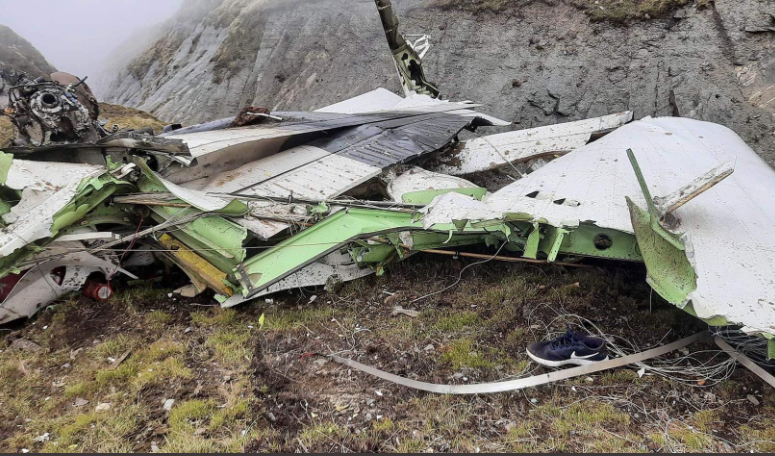Following Tara Air Disaster, Nepal Wants to Change The Way It Clears Flights
The idea is an understandable way to approach the problem. But it’s wrongheaded.

Some of the wreckage of a Tara Air de Havilland Twin Otter that crashed in mountainous terrain in Nepal last week.
Nepal, a mountain nation, has more than its share of aircraft crashes, most of them fatal ones. Last week, a de Havilland Twin Otter crashed into a mountain near the rural municipality of Jomsom at an altitude of around 14,000 feet. The weather, as is often the case in Nepal, wasn't good flying weather. Twenty-two were killed in the crash, the third for Tara Air over the last few years.
So when Nepal, a few days after the crash, announced that it would look into changing flight rules to prevent such accidents in the future, it was a big move, though one that given the circumstances surrounding it, no one should have been too surprised about.
But the nature of that proposal is as follows: In the past, if the weather was okay at the departure and destination airports, the pilots could make the flight. That was presumably the case for the Tara Air Twin Otter that crashed last week.
The proposal, however, would fundamentally change that decision-making process. Instead of the pilots making the go/no-go call, the airport would---it's not clear who at the airport would do that---if the weather not just at both airports was okay but if the weather between them was, as well.
It's not hard to guess why the authorities came up with this plan. Pilots will launch on a mission if the weather at departure and destination is good, and figure that they will deal with the weather along the way as need be. By the airports being the one to issue the go-ahead, it would take the decision out the hands of the pilots, and presumably help them make better, safer go/no-go choices.
This goes against more than a hundred years of conventional wisdom when it comes to flying in and around the weather. In the United States, the rules give the pilot wide latitude to make the decisions associated with a flight. What is the visibility at a given field? It's what the pilot decides it is. When can you make a trip from one place to the next? When the pilot decides it's safe to do so.
Disintermediating the pilot from the final decision makes sense in one big way! it takes the pressure off of them from employers who often push pilots to make a flight even when it is expressly against their best judgment. Even if the company were to say "go," the pilot would still need to comply with ATC's decision.
But such a rule misunderstands the essential nature of weather intelligence, and every pilot with a few hundred hours of IFR under their belt knows this: You don't really know what the weather is like until you get there. ATC won't know what the weather is---their directives will be tantamount to an educated guess. Such decisions in the blind could lead to many flights being needlessly postponed or cancelled altogether or worse. It could lead to launching fights into weather the pilots might have chosen to pass on.
What's a better route for Nepal to take? Look no farther than Alaska for the answer---okay, I guess Alaska is a long ways from the lower 48. How did the FAA and local authorities work together to make such flights in bad weather and around big rocks safer? By installing weather cams in the major hot spots. The cams broadcast the actual weather picture. So pilots can see what they'd be getting into, and they can make a more informed decision. Nepal should approach the problem in a similar fashion, by giving pilots more safety tools and not by trying to do their job for them.

Subscribe to Our Newsletter
Get the latest Plane & Pilot Magazine stories delivered directly to your inbox






